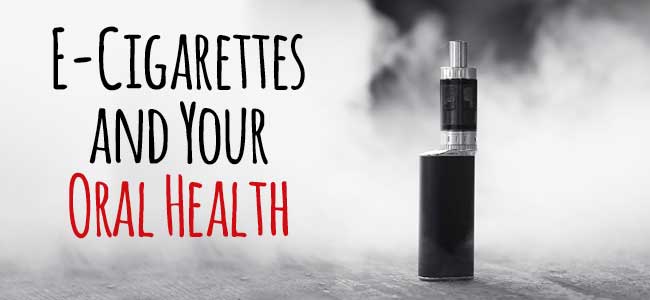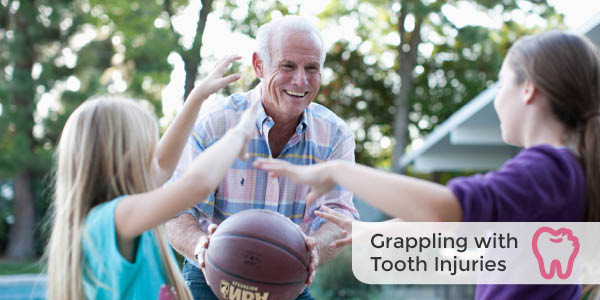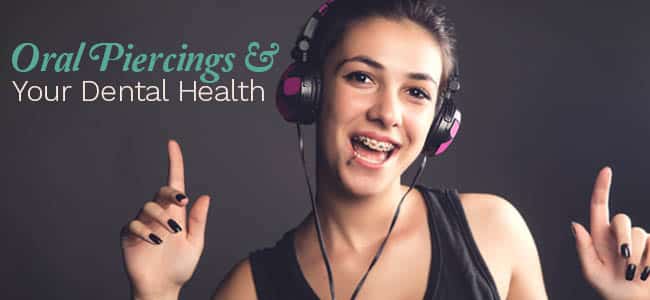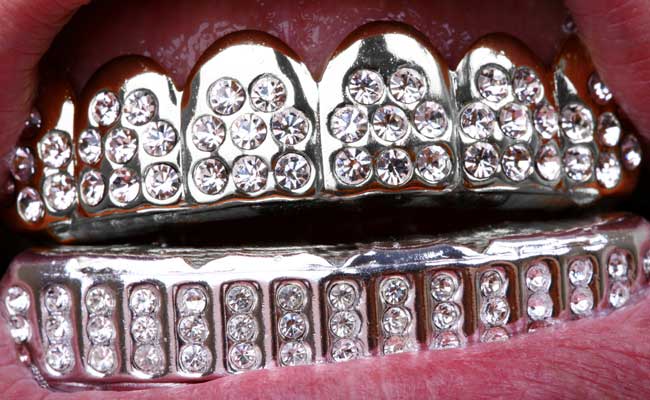E-Cigarettes and Your Oral Health: The Smokeless Threat to Your Smile

For many smokers, e-cigarettes seem like the best answer to avoiding the nasty side effects of smoking traditional cigarettes, including the odor and the staining of teeth, skin, and clothing. Though e-cigarettes still contain the highly addictive chemical nicotine, tobacco and other harmful elements are eliminated from the electronic smoking process, or what some refer to as “vaping.” The growing popularity of e-cigarettes and vaping, especially among young people, has caused a rise in concern over the lack of knowledge around the effects it has on health. While clinical studies are currently underway, in 2014 the U.S. Food and Drug Administration (FDA) released a statement saying “e-cigarettes have not been fully studied, so consumers currently don’t know the potential risks of e-cigarettes when used as intended, how much nicotine or other potentially harmful chemicals are being inhaled during use, or whether there are any benefits associated with using these products.” Vaping has a direct effect on oral health. Exposure to e-cigarette aerosol can lead to an increase of bacteria in the mouth, which is associated with gum disease, cavities, and tooth decay. The flavoring added to many e-cigarettes can also lead to cavities, not to mention an increased chance of developing chronic lung diseases. It can also cause dry mouth, inflamed gums, and other issues dentist are able to speak to how these new smoking devices threaten your oral health. Nicotine is harmful to your teeth and gums, even in the absence of tobacco and other chemicals traditionally found in cigarettes. Electronic cigarettes still deliver nicotine to their users through the mouth, throat, and lungs. The following are some of the consequences that come with using smokeless cigarettes. Gum Disease: One of the highest risks of e-cigarettes is an increased risk of gum disease coming from three specific conditions. Nicotine leads to Vasoconstriction, which is the limiting of the blood supply to the gums. When the blood supply to your gums is reduced it makes the more susceptible to infection and can lead to gum recession. Gum disease is caused by plaque bacteria. Smoking dries out your mouth, creating an environment that is more conducive for bacteria growth. Your immune system is weakened as a result of smoking, so infectious diseases can develop at a faster rate. It’s important to note that in addition to the problems caused by vasoconstriction one of the telltale signs of gum disease is swelling of the gums caused by irritation. When nicotine reduces blood flow, preventing swelling, this indication of gum disease can be masked, causing your dentist to miss the symptoms and allowing the disease to progress. Gum Recession: Lack of blood flow to the gums keeps the tissue from receiving the nutrients it needs to survive. Over time the skin dies and recedes. Bad Breath: Nicotine restricts your body’s ability to produce saliva, which makes your mouth vulnerable to harmful bacteria and tooth decay. Combined, dry mouth and bacteria lead to halitosis, which can be embarrassing and can affect your self-esteem. Intense Grinding: As a stimulant, nicotine causes muscles to tighten and spasm against the user’s will. It can cause sleep disturbances such as insomnia and grinding of the teeth. Grinding, especially while sleeping, can be damaging to teeth and result in the loss of tooth enamel, as well as chipping, cracking, and breaking of teeth. If you want to maintain your best oral health, avoiding any type of smoking is recommended. If you do choose to smoke, keeping it to the minimum and maintaining your best at-home oral hygiene practices as well as your routine visits to the dentist is important. If you see signs of periodontal disease (including red, swollen, bleeding, or receding gums) or experience bad breath, painful chewing, or loose teeth, make sure to contact your dentist immediately. There are treatments you can receive that will help keep your teeth and gums in the best possible condition. Two such treatments include: Professional dental cleanings Plaque and tartar are removed from above and below the gumline. If you have gingivitis or signs of periodontitis, you will be required to have this level of cleaning twice a year or more. Scaling and root planing Plaque and tartar are scraped away from both above and below the gumline while under local anesthetic (scaling). Rough spots on the tooth root are then smoothed out (planing). Locally applied medications, such as antimicrobials and antibiotics, may be used. If you are experiencing jaw tightness or pain, and you think you might be grinding your teeth, your provider can fit you with a mouthguard that will protect your teeth while you sleep. It can be difficult to share your habits with your dentist. At AV Sierra Dental Center, we treat our patients with respect and compassion. We are here to help you be your healthiest self. If you use e-cigarettes and are concerned about how they may be affecting your oral health, call us today and set up a consultation. We will help you protect your teeth and maintain your natural smile.
7 Tooth-Saving Tips for Full-Contact Sports

From a solid hit on the football field to a stray left hook in an MMA fight the opportunity for severe dental injuries in full-contact sports is significant. Sports such as MMA, kickboxing, boxing, grappling, and wrestling are thrilling, and they provide excellent workouts and sustained confidence for people of all ages. And while most classes provide or require some form of protective gear, accidents can still happen. One of the most common causes of tooth loss is trauma caused by impact or unexpected contact with a hard surface. Breaking, chipping, and cracking that leads to a tooth needing to be removed can occur when engaging in sports that include partial or full-contact sparring. When trauma to a tooth occurs, there are things you can do to try to preserve the tooth and save it from loss. The following list is a guide for what to do when you are faced with an unexpected dental emergency. Knocked-Out Tooth: Rinse the tooth carefully, making sure not to wash away any remaining tissue. Attempt to place the tooth back in its socket carefully. If this is not possible, place it in a container of milk, or water with a pinch of table salt. Call your emergency dentist immediately. Your tooth has the best chance of being saved if you are seen within an hour of having it knocked out. Chipped, Cracked, and Broken Teeth: Gather and rinse all broken pieces of the tooth. Rinse your mouth with warm water and apply gauze if there is bleeding. Use a cold compress to relieve pain and swelling in the injured area, and contact your emergency dentist to be seen immediately. Fractured Tooth: Dentist can easily fix fractures with a composite restoration. A dentist should be seen within a couple days of the injury. Partially Dislodged Tooth: When a tooth gets pushed out of its proper position, it is important to manage the pain and get into your emergency dentist immediately. Apply a cold compress to the area and take a pain reliever such as acetaminophen or ibuprofen as needed. Lost or Broken Crown: Save your crown and set up an appointment with your emergency dentist right away. If possible, use over-the-counter dental cement to reattach the crown. If there is any pain, take an over-the-counter pain reliever such as ibuprofen or acetaminophen. Clove oil can also be used to soothe sensitive areas. Broken Braces: Orthodontic wax can be used to cover or temporarily reattach loose brackets and broken wires. If a broken wire is poking out and into your cheek or tongue, use the eraser end of a pencil to move it into a comfortable position, then cover it with wax, gauze, or cotton. See your orthodontist to have your braces repaired. Soft-Tissue Injuries: Tears, punctures, and lacerations to the soft tissues of the cheek, lips, or tongue should be cleaned and packed with gauze. A trip to the emergency room is necessary if stitches are needed. If you or your children are considering joining a full-contact sport, preparing for a dental emergency is key to preventing tooth loss. The following are a couple of items and information to have on hand: Dentist’s phone number and email address Small, portable container for dental emergency kit Saline solution Tissue Gauze Orthodontic wax Dental cement Compress Ibuprofen and/or acetaminophen Finally, one of the most important steps you can take toward protecting your smile in any sports-related activities is talking to your dentist about a mouthguard. According to the American Dental Association, sport mouthguards have been shown to reduce the risk of sport-related dental injuries. Having a dental provider fit you with one that is resilient, comfortable, and durable could mean the difference between keeping or losing your teeth in a sports-related incident. To find out more about mouthguards and protecting your teeth, call AV Sierra Dental Center in Palmdale, CA. We can help you get the right protective gear to keep your smile healthy white and free of missing teeth. Call today at 661.202.3542!
How do oral piercings affect oral health?

A Healthy Smile Is Your Best Accessory Body piercings have become increasingly prevalent over the past decade, and with more and more celebrities like Victoria Beckham, Tyrese, and Christina Aguilera sporting them, they are only gaining popularity among people of all ages. While piercings offer people the opportunity to express their individuality and add some extra bling to their personal style, some of the most popular piercings are located in the mouth area, which can be problematic. Do oral piercings damage teeth? Oral piercing can hurt your teeth and gums. It’s already easy enough to damage your teeth from day to day activities like chewing ice or trauma from sports. Complicate things with a piece of metal jewelry you just make it more likely to crack an incisor. In addition to an increased chance of injury an oral piercing can irritate your gums. Even without trauma having a stainless steel ball rubbing along your teeth can lead to enamel damage, scratches, and tooth sensitivity. If you’ve had any dental work done—including fillings or crowns—oral piercings can damage these as well, so if you don’t want to spend more money and time in the dental chair having your dental work repaired, we recommend choosing a non-oral piercing—if you’ve really got the urge to pierce something Popular face and mouth piercings include those in the tongue, lip, and cheek areas. The following are just some of the health risks and side effects associated with these piercings. Infection: Your mouth is home to a large number of bacteria that breed in moist environments. This is the perfect environment for an infection to occur. When an infection occurs in your mouth, it can become life threatening if not treated immediately. Excessive bleeding: On occasion a blood vessel gets punctured during the piercing process and results in prolonged bleeding. If not dealt with properly, severe blood loss can cause complications. Damaged gums and teeth: People with mouth piercings often develop the habit of playing with them, which may include biting and twirling them around the mouth. This can lead to scratched, cracked, and broken teeth and fillings. It can also damage the gum line. Allergic reactions: Sometimes people may unknowingly be hypersensitive to metals and can experience an allergic reaction. Nerve damage: Numbness at the site of the piercing is common. However, in some cases it remains a permanent condition due to nerve damage. Excessive saliva: Heavy salivation can result from wearing jewelry in your mouth. This can cause complications with your ability to chew and swallow correctly. It can also interfere with the pronunciation of words. If you do decide to get a face or mouth piercing, or if your child or adolescent has one, be prepared for four to six weeks of healing time. The following are some tips that will help you maintain your oral health should you decide to keep or get a mouth piercing: Make sure to keep the piercing site clean after you eat. Clear away any food particles by using mouthwash after each meal. Remove all jewelry when participating in sports, and ask the dentist about getting a mouthguard for protection. If you notice that you are developing habits that include biting or clicking your piercing against your teeth, stop immediately or consider removing the jewelry. If you think you may have an infection or might be developing an allergic reaction to the metal in your mouth jewelry, remove it immediately and call your doctor. The ADA advises against getting body modification to the mouth and considers these as invasive procedures with negative health benefits that outweigh the cosmetic effect on a person. How do you protect your teeth with oral piercings? If you already have piercings or decide that you want to get one there are ways to help protect and preserve your oral health. Keep the area clean – Be aware of food debris that can support harmful bacteria and pay extra attention to cleaning around the piercing or modification to prevent infection. Avoid rubbing your jewelry on your teeth – by preventing the metal parts of the jewelry from common in contact with your teeth you can prevent enamel damage. You should also pay attention the jewelry while speaking and eating to prevent accidents. Be extra mindful of oral hygiene – Brush your teeth twice each day, floss, use an oral rinse around the piercing and visit your dentist every six months to ensure that the piercing isn’t causing damage. Choosing to get a facial or oral piercing is an aesthetic decision that impacts your oral and whole health. Your at-home oral hygiene routine will be more important than ever should you choose to get one, as will your routine visits to the dentist and your dental cleanings. Make sure to let our provider know if you have an oral or mouth piercing so that he can help create a dental plan that will protect and maintain your best oral health. To find out more about mouth piercings, your oral health, and how we can help protect your teeth and gums, give your Palmdale dentist a call at 661.202.3542 today.
A Brief History of Grills

A Brief History of “Grills” Grills (or grillz) are, if not popular, at least fairly recognizable these days. Made of precious metals (gold and platinum being the most common) and often studded with diamonds, most grills are removable and worn over the front teeth. But where do they come from? Although many people would point to Nelly and his 2005 song, “Grillz,” as the starting point for the trend, they’re actually much older than that. (And no, we’re not just talking about rappers like Slick Rick, Flavor Flav, and Big Daddy Kane from the 80s and 90s, either). We’re talking ancient history. In ancient Italy, between 800 and 200 BC, wealthy Etruscan women wore teeth woven together with gold wire the thickness of a rubber band. The wire held together teeth that had been removed and were placed back into the mouth, so they made eating difficult. The practice wasn’t necessarily common, but archaeologists found documentation of around 20 sets of teeth woven together in this way. Etruscan civilization vanished as the Romans took over Italy, and this fashion trend died with it. In Latin America, Mayans actually cut small holes into their teeth and filled them with precious stones, typically jade. Again, this was a trend that only royalty and the wealthy could afford. Although the Mayan civilization has disappeared, many people in southeastern Mexico, Belize, Honduras, and Guatemala still wear gold tooth jewelry today. In ancient Filipino myths, the creator of the world, a deity named Melu, had gold teeth—and during what was the Middle Ages in Europe, Filipinos were filing down their teeth and decorating them with gold. Some of these decorations included gold bands that covered the entire front row of teeth; the oldest date to around 1300 AD. As the Renaissance began in Europe, dentistry was becoming more scientific and less superstitious—and Giovanni de Arcoli, a 15th century Italian professor of medicine, became the first author known to recommend filling cavities with gold to preserve them. Grills started appearing in rap and hip hop videos in the 80s, and became even more popular as Southern rap began to take off in the 90s and early 2000s. And now, they’ve jumped into mainstream culture, as celebrities like Madonna, Miley Cyrus, Katy Perry, and even Ryan Lochte have sported them in recent years. You might expect a dentist to come out against grillz as a health hazard, but no studies have proven that they’re bad for your teeth. As long as they’re removed and the teeth are brushed and flossed as appropriate, they shouldn’t cause health problems. Some metals can cause irritation; if it causes a rash, or bleeding, or other problems, just stop. Similarly, don’t clean them with anything toxic to ingest (like most jewelry cleaners), and don’t try to attach them permanently to your teeth with glue. But if you want to wear a grill, and you use some common sense and take care of your teeth, you’ll be part of a long tradition of dental jewelry. We can’t recommend a jeweler to create your grill, but if you have any questions about dental instruments—either ornamental or for health reasons—please give us a call at 661.202.3542 and we’ll be happy to answer your questions.
Toothpastes

Do you ever stand in the oral care section at a grocery store and wonder why there are so many different types of toothpaste available today? Think about how many brands there are—and then how many different types of toothpaste there are for each brand! Crest 3DWhite, Pro-Health, Pro-Health Advanced, with Scope, Sensi, regular old Crest, Kids’ Crest… the list goes on and on. A helpful way to think about your toothpaste choice is to think about your goals, beyond proper oral hygiene, when you brush. Do you want fresh breath or whiter teeth? Do you have tooth sensitivity? Do you want to avoid a long appointment next time you’re at your dental cleaning? When you answer those questions, you’ll start to narrow down that overwhelming selection of toothpaste to a more manageable few. There are a few common types of toothpaste out there today. However, it’s important to realize that many kinds of toothpaste fit into one or more of the categories that suit different needs. Fluoride Toothpaste Fluoride toothpaste contains fluoride compounds to help prevent tooth decay. Fluoride works by strengthening, and even helping repair, tooth enamel. Many public water supplies are treated with small amounts of sodium fluoride. Fluoride treatments at the dentist are also available. Fluoride toothpaste varies in the amount and type of fluoride compounds they contain and can come in a variety of flavors that appeal to both adults and children. Whitening Toothpaste If you’d like your teeth to look a little whiter, whitening toothpaste is a great option. They’re not as effective as dedicated whitening products like whitening strips, but they can help you maintain whitened teeth. However, keep in mind that many whitening kinds of toothpaste can be more abrasive than regular toothpaste and may weaken the enamel of your teeth. If you use them, give your teeth an occasional break by using less abrasive toothpaste as well! Desensitizing Toothpaste Some people experience pain when their teeth are exposed to cold, heat, or touch—even the gentle pressure applied when brushing their teeth. If you experience this condition, called dentin hypersensitivity, you can use desensitizing toothpaste to make brushing a more pleasant (or at least not painful) activity. Anti-plaque Toothpaste Anti-plaque toothpaste help prevent plaque from accumulating around your teeth, reducing the risk of tooth decay and gum disease. There are a variety of anti-plaque compounds out there, including Triclosan (an anti-bacterial compound) and zinc citrate (which supports your immune system). Children’s Toothpaste Toothpaste for kids may or may not have fluoride in them—and that’s actually not a problem. First of all, the physical action of brushing (and flossing) loosens plaque and helps protect your teeth. Typically, toothpaste made for children has fruity flavors and lower levels of fluoride in case of swallowing. To be honest, the most important choice you make is to brush and floss regularly. The best type of toothpaste for you to use is one that supports your oral care needs, and that you will use twice a day, every day. Of course, if you’d like to find out more about toothpaste, or want specific recommendations, we’re happy to help. Call your Palmdale, CA dentist at 661.202.3542 today!
